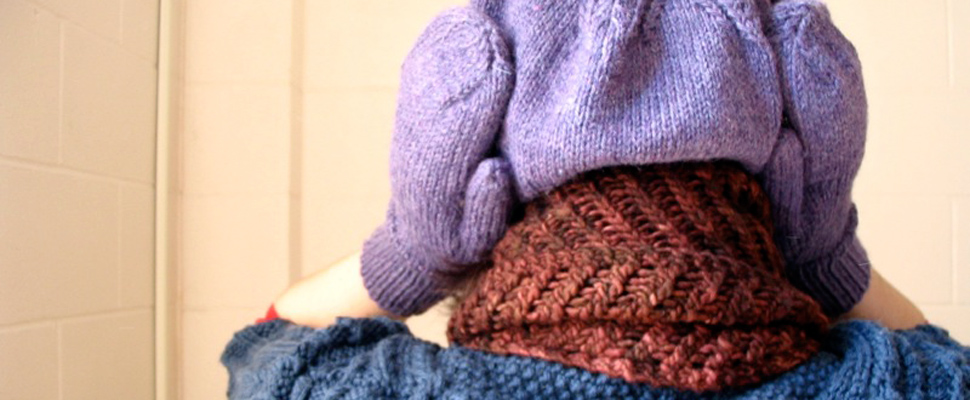If you’ve ever wondered on a hot summer day why you’re freezing in a campus building, you’re not alone. So we went behind the scenes with NC State’s Building Maintenance and Operations department to learn why some classrooms get so chilly and how it relates to saving energy on campus. Turns out, it comes down to outside temperature, humidity and ventilation.
Temperature. When outside temperatures are 80+ °F, it takes 55 °F air pumping into rooms in order to effectively and efficiently lower the indoor temperature. If you’re the poor cold-natured person sitting directly under an air vent, you just might feel like you’re in the North Pole. In contrast, on a cold winter day when outside temperatures are below 30 °F, it takes 72 °F air pumping into rooms to effectively and efficiently raise the indoor temperature. The bigger the room, the more air vents it has, so you’re more likely to feel heated or cooled air blowing directly on you. Our advice for cold- or warm-natured students: get to class early, look for ceiling vents and place yourself strategically.
Humidity. Relative humidity must be at around 50 percent to prevent mold in buildings. So if humidity rises to or beyond 65 percent, 55 °F air will be pumped through the building to remove water in the air – regardless of how cold it is outside. On the flip side, if humidity drops below 45 percent, 65 °F air will be blown through the building to increase humidity. So watch out for cold, damp days and warm, dry days. They may cause buildings to be warmer or cooler than usual.
Ventilation. Unlike your home, campus buildings have ventilation to bring in outside air, which helps prevent the spread of germs and increases indoor air quality. In full classrooms, sensors monitor carbon dioxide levels and pump in more oxygen-rich air from outside so that you won’t be oxygen-starved and yawning off during class. If you’re already cold, you’re likely to get even chillier as this cooled outside air is pumped into the room. Same thing applies in winter; if you’re already warm, you’re likely to get even warmer.
Other factors at play in building temperature include renovations, mechanical failures or that the temperature sensor is being controlled by someone in another room. Some buildings are colder because they contain servers that emit a lot of heat. Lab buildings might feel like a sauna or ice block because, for safety reasons, labs don’t have return air. And if you’re ever in a building after traditional hours or on the weekend, you may encounter cooler or warmer temperatures because the building is in energy-saving mode.
So next time you’re too warm or cold in a campus building, you’ll know some reasons why.
Image credit: Flickr
